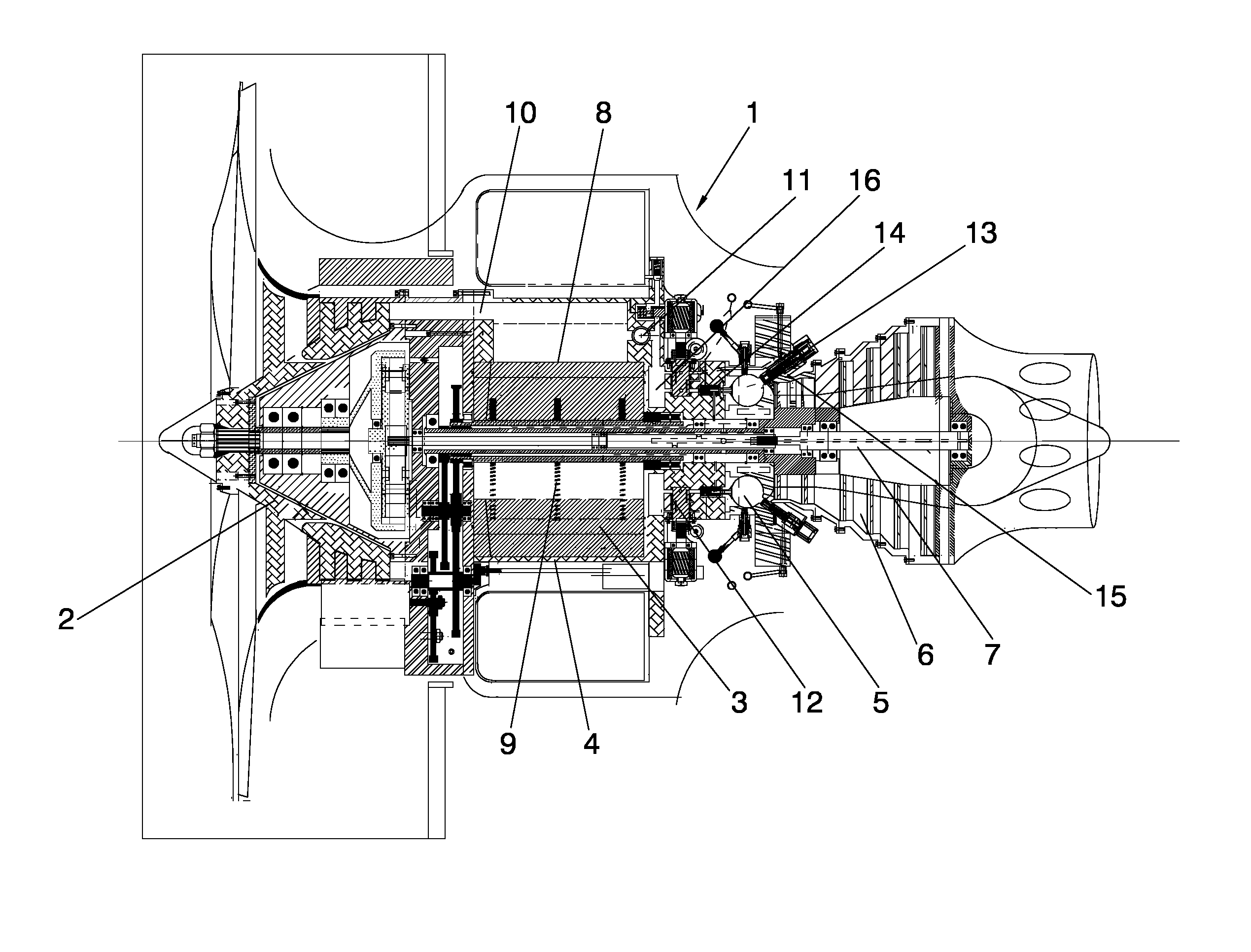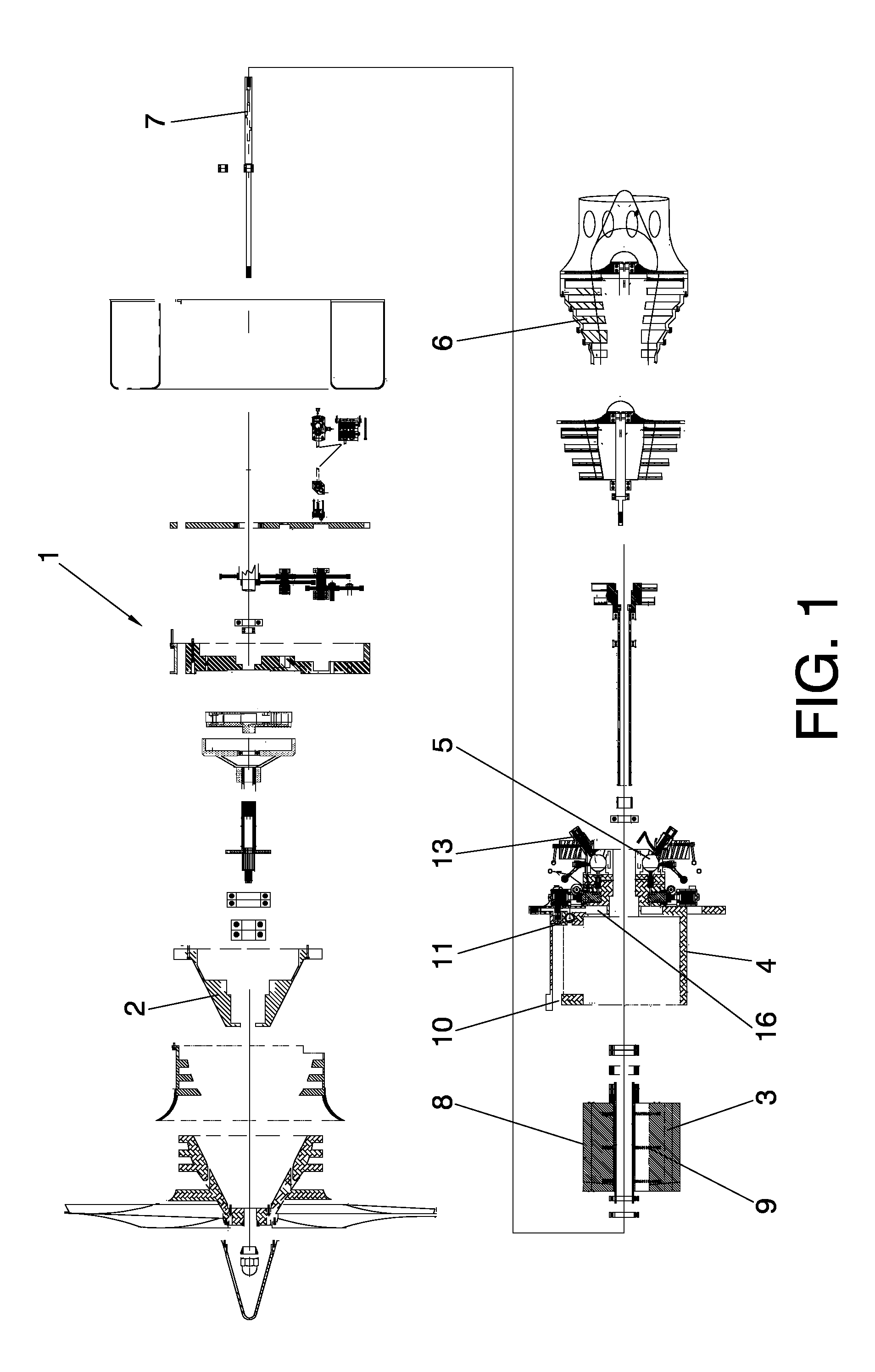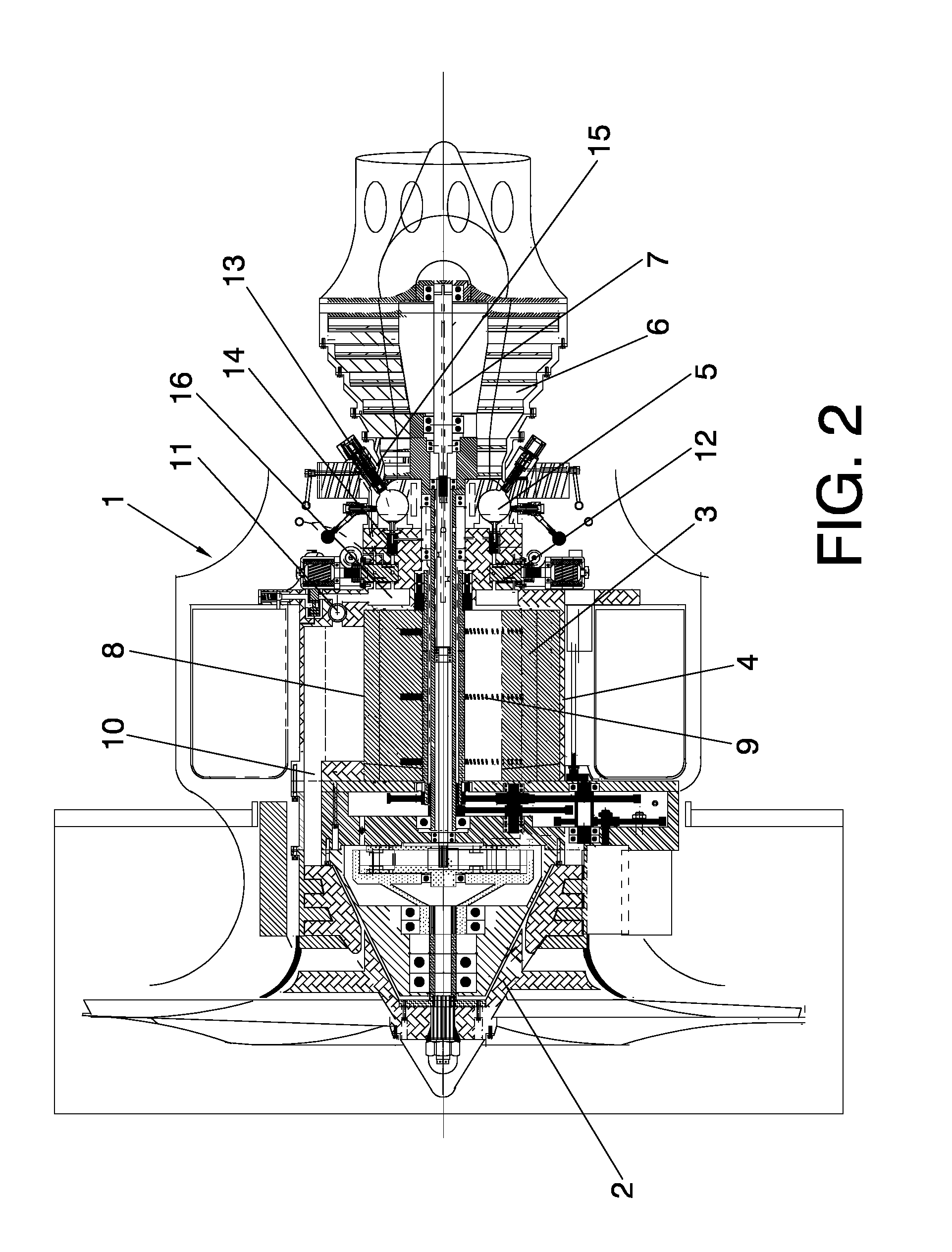Jet engine
- Summary
- Abstract
- Description
- Claims
- Application Information
AI Technical Summary
Benefits of technology
Problems solved by technology
Method used
Image
Examples
Embodiment Construction
[0017]The object of the invention is a high performance, energetically efficient engine, which features a compressor block defined by a high speed, eccentric rotor turbo compressor with a rotor that, in a preferred embodiment of the object of invention, comprises four self-adjusting, cross-sectioned blades—self-adjusting, since they are equipped with adjusting mechanisms defined by springs inserted in the interior thereof—on the stator with automatic recovery. This system facilitates closure in the radial direction while closure in the axial direction is carried out by two retainer rings situated on the two inner faces of the stator.
[0018]The aforementioned stator has an air inlet channel situated in the cool part of the stator and is responsible for supplying the turbo compressor. This duct connects to an inlet channel situated in the rotor chamber and is offset 45° with respect to the air exhaust channel, already compressed. The shutoff between the two channels is ensured by means...
PUM
 Login to View More
Login to View More Abstract
Description
Claims
Application Information
 Login to View More
Login to View More - R&D
- Intellectual Property
- Life Sciences
- Materials
- Tech Scout
- Unparalleled Data Quality
- Higher Quality Content
- 60% Fewer Hallucinations
Browse by: Latest US Patents, China's latest patents, Technical Efficacy Thesaurus, Application Domain, Technology Topic, Popular Technical Reports.
© 2025 PatSnap. All rights reserved.Legal|Privacy policy|Modern Slavery Act Transparency Statement|Sitemap|About US| Contact US: help@patsnap.com



